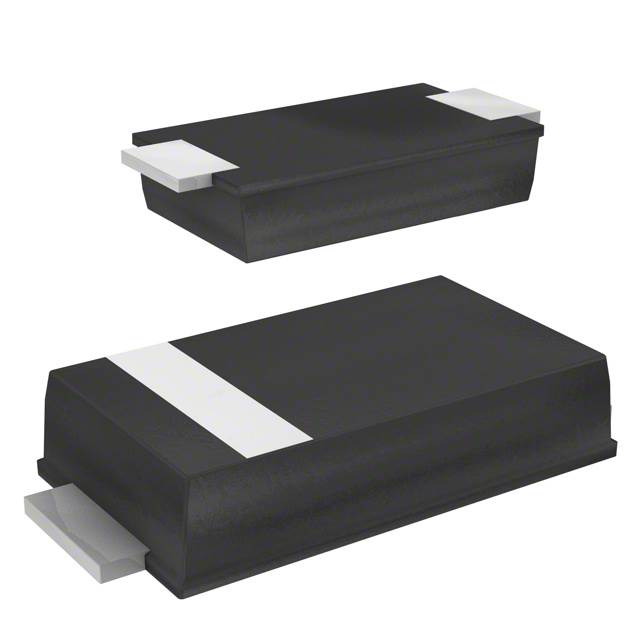Ⅰ. Circuit Protection
Ⅱ. What is Circuit Protection?
Ⅲ. The Origin of Circuit Protection
Circuit protection refers to the use of various devices and techniques to protect electronic circuits from damage due to overvoltage, overcurrent, or other electrical faults. Circuit protection is critical for ensuring the reliability and safety of electronic equipment, as well as for preventing fires and other hazards.

There are several types of circuit protection devices, including:
Fuses: Fuses are passive components that are designed to break the circuit when the current exceeds a certain threshold. They are typically made of a metal wire or filament that melts when the current exceeds the rated value, opening the circuit and protecting the components downstream.
Circuit breakers: Circuit breakers are active components that can be manually or automatically reset after tripping. They work by opening the circuit when the current exceeds the rated value, but unlike fuses, they can be reset without replacement.
Surge protectors: Surge protectors are devices that protect electronic equipment from power surges and spikes caused by lightning strikes, power outages, or other events. They work by diverting excess voltage to ground, preventing it from damaging the equipment.
Overvoltage protection devices: Overvoltage protection devices, such as TVS diodes and MOVs, protect electronic circuits from voltage spikes and transients. They work by absorbing the excess energy and dissipating it as heat.
EMI/RFI filters: EMI/RFI filters are devices that suppress electromagnetic interference and radio frequency interference. They work by filtering out unwanted frequencies and noise from the power supply or signal lines.
Circuit protection is essential for the proper operation and safety of electronic equipment. Proper circuit protection can help prevent costly damage and downtime, and can ensure that equipment operates safely and reliably for years to come.
What is Circuit Protection?
Circuit Protection refers to the use of various electronic components, circuits and equipment to protect the circuit from over-current, over-voltage, over-temperature and other abnormal conditions, so as to ensure the normal operation and safe operation of the circuit.
Circuit protection is an important concept in electronic engineering, which involves the selection of various electronic components, circuit design, and system construction.
The main purpose of circuit protection is to protect various electronic components and devices in the circuit, such as power supplies, sensors, operational amplifiers, microcontrollers, communication interfaces, etc., from damage caused by abnormal conditions. These abnormal conditions include over-current, over-voltage, over-temperature, electromagnetic interference, etc.
Over-current means that the current exceeds the rated value of the component or circuit, over-voltage means that the voltage exceeds the rated value of the component or circuit, over-temperature means that the temperature of the component or circuit exceeds the rated range, and electromagnetic interference means that the circuit is affected by external electromagnetic waves. Influence.
Common circuit protection components include fuses, inductors, capacitors, diodes, metal oxide varistors (MOVs), and more.In addition, there are some special circuit protection chips, such as over-voltage protection chips, over-temperature protection chips, over-current protection chips, etc. These chips usually have a variety of protection circuits and algorithms built in, which can effectively protect circuits and equipment.
In circuit design, appropriate circuit protection components and chips should be selected according to the actual situation, and the protection circuit should be reasonably designed to ensure the reliability and safety of the circuit.
The Origin of Circuit Protection
Circuit protection is an important part of circuit design to protect circuits from unexpected events such as overcurrent, overvoltage, overtemperature, and short circuits. The origin of circuit protection can be traced back to the early development of electricity.
Electricity began to be used for lighting and communication in the early 19th century. During this period, the main method of circuit protection was the use of fuses. A fuse is a circuit protection device that cuts off the current when the circuit is interrupted, thereby protecting the circuit from overloads and short circuits.
The working principle of the fuse is to cut off the circuit by adding a thin wire to the circuit and blowing the thin wire when the current exceeds the rated current of the thin wire. This approach was widely used in power systems in the late 19th and early 20th centuries.
With the development of power systems, other circuit protection devices have also been developed, such as fuses, circuit breakers and protective relays. These devices protect circuits and equipment from overloads and short circuits by automatically cutting off the current in the event of a fault in the circuit.
Modern circuit protection devices adopt many new technologies, such as electronic protection, microprocessor control and intelligent protection, etc., to improve the reliability and safety of the circuit.
标签:circuit



